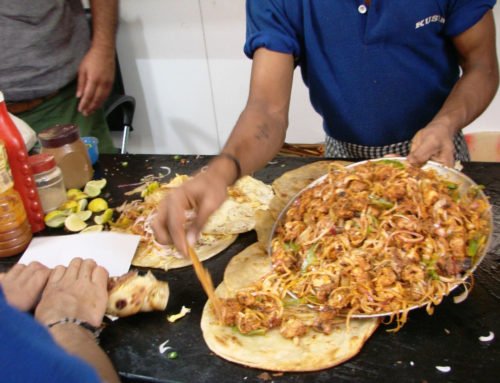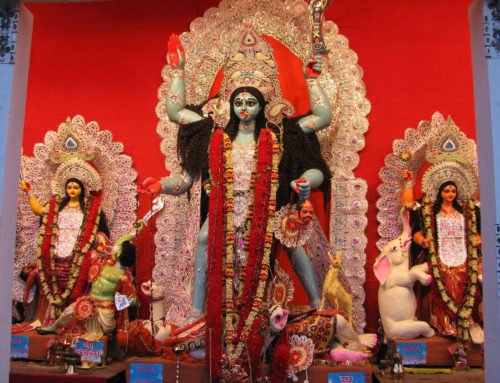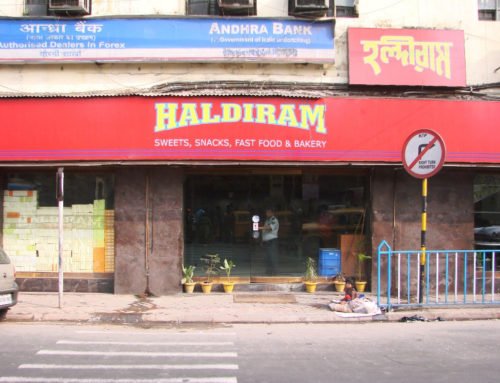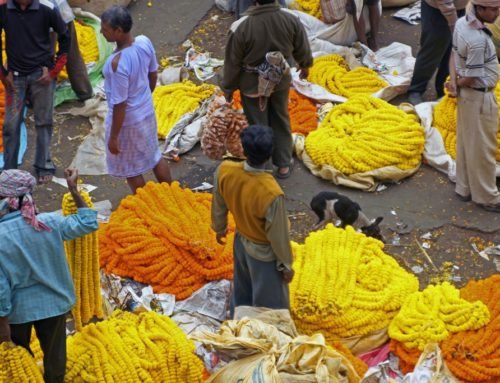Overview
- Features: Largest Hindu pilgrimage site in Kolkata
- Opening Times: 5am to 2pm & 4pm to 10pm, daily
- Best Time to Visit: Wednesday & Thursday mornings
- Duration: 30 mins to 1 hr
- Travelled By: Metro
- Cost: Free
- Address: Kali Mandir Road, Kalighat, Kolkata, West Bengal, India
- Type: Temple
Author Reviews[display_rating_item_results rating_form_id=”2″ rating_entry_ids=”1″ show_category_filter=”false” show_options=”true” result_type=”star_rating” preserve_max_rating=”true” show_title=”false” show_count=”false” ]
Total Rating: [display_rating_result rating_form_id=”2″ show_count=”false” show_rich_snippets=true] [accordions load=”1″] [accordion title=”User Reviews” last] [display_rating_item_results rating_form_id=”5″ show_options=”true” result_type=”star_rating” preserve_max_rating=”true” show_title=”false” show_count=”true” show_rich_snippets=true] [/accordion] [accordion title=”Add Review”][display_rating_form show_email_input=”true” show_comment_textarea=”true” show_name_input=”true” rating_form_id=”5″] [/accordion] [/accordions]
Summary
The ancient Kalighat Temple is Kolkata’s holiest spot for Hindus and possibly the source of the city’s name. This is the temple to Kali, the patron goddess of Kolkata. The present Kalighat Temple dates to the early 19th century, but this has been a sacred spot for much longer. Today’s version, a 1809 rebuild, has floral- and peacock-motif tiles that look more Victorian than Indian.
Kalighat Temple Kolkata
The ancient Kalighat Temple is Kolkata’s holiest spot for Hindus and possibly the source of the city’s name. This is the temple to Kali, the patron goddess of Kolkata.
Kolkata’s old pilgrimage site, Kalighat finds mention in numerous medieval poems and ballads. Legend has it that the god Shiva, in a fury of grief at the death of his wife, Sati (an incarnation of Parvati), slung her body on his shoulders and danced the terrible tandava nritya (dance of death), destroying everything in his path. To stop the carnage, Vishnu flung his magic chakra (discus) at Sati’s body, and the dismembered parts scattered across the land. The spot where the little toe fell became Kalighat, and some believe that the name Kolkata is derived from this.
[singlepic id=526 w=720 h=560 float=center]
The present Kalighat Temple dates to the early 19th century, but this has been a sacred spot for much longer. Today’s version, a 1809 rebuild, has floral- and peacock-motif tiles that look more Victorian than Indian.
[singlepic id=530 w=720 h=560 float=center]
More interesting than the architecture are the jostling pilgrim queues that snake into the main hall to fling hibiscus flowers at a crowned, three-eyed Kali image. The image of the goddess in the dark inner sanctum is of a wild, untamed figure garlanded with skulls, with tangled tresses and wide, ferocious eyes. Her extended tongue has a gold covering which is changed everyday.
Behind the bell pavilion but still within the mandir complex, goats are ritually beheaded to honour the ever-demanding goddess, or, as a local guide described it, to buy ‘God power’. If you’re uneasy about the idea of animal sacrifice, avoid the enclosure to the south of the temple where at least one goat is offered to Kali every day (a ritual that allegedly replaced the ancient practice of human sacrifice).
If you’re a non-Hindu, you cannot enter the inner sanctum, sticky with the rotted remains of fresh flowers offered by devotees every day, but it’s worth your while to explore the courtyards and the various stalls selling flowers, fruit, and religious paraphernalia.
When visiting the temple, be wary of the so-called priests—temple “guides” who usher you into the complex and conduct a whirlwind tour of the facilities, only to present you with a donation book that records the radically generous donations of other foreigners.
Priests will also attempt to snare foreigners for the obligatory puja. A barrage may start as far away as 500 m from the temple. Don’t be fooled into handing over your shoes and succumbing to any priests until you are clearly inside the temple, despite being shown ‘priest ID’ cards. Once settled with a priest the experience can be well worth the initial hassle.
[singlepic id=527 w=720 h=560 float=center]
This temple complex is a major pilgrimage centre, drawing some 20,000 visitors each day. The temple is always crowded, especially on Tuesdays, weekends and festival days when the lines of devotees are miles long; Wednesdays and Thursdays are least congested.
Kalighat Temple is hidden in a maze of alleys jammed with market stalls selling votive flowers, brassware, religious artefacts and pictures of Kali.
[singlepic id=531 w=720 h=560 float=center]
Getting to & from Kalighat Temple
The easiest and most affordable way to get to Kalighat Temple is to take the Metro to Jatin Das Park Metro station. From there, continue south along Ashutosh Mukherjee Road and turn right onto Kali Mandir Road. At the end of the road is Kalighat Temple. The closest bus stop if Kalighat bus stop on Hazra Road; walk south along Kalighat Road to the temple. Alternatively, you can take a taxi or hire a private car with chauffeur for the day from your hotel or a reputable travel agency in town.







